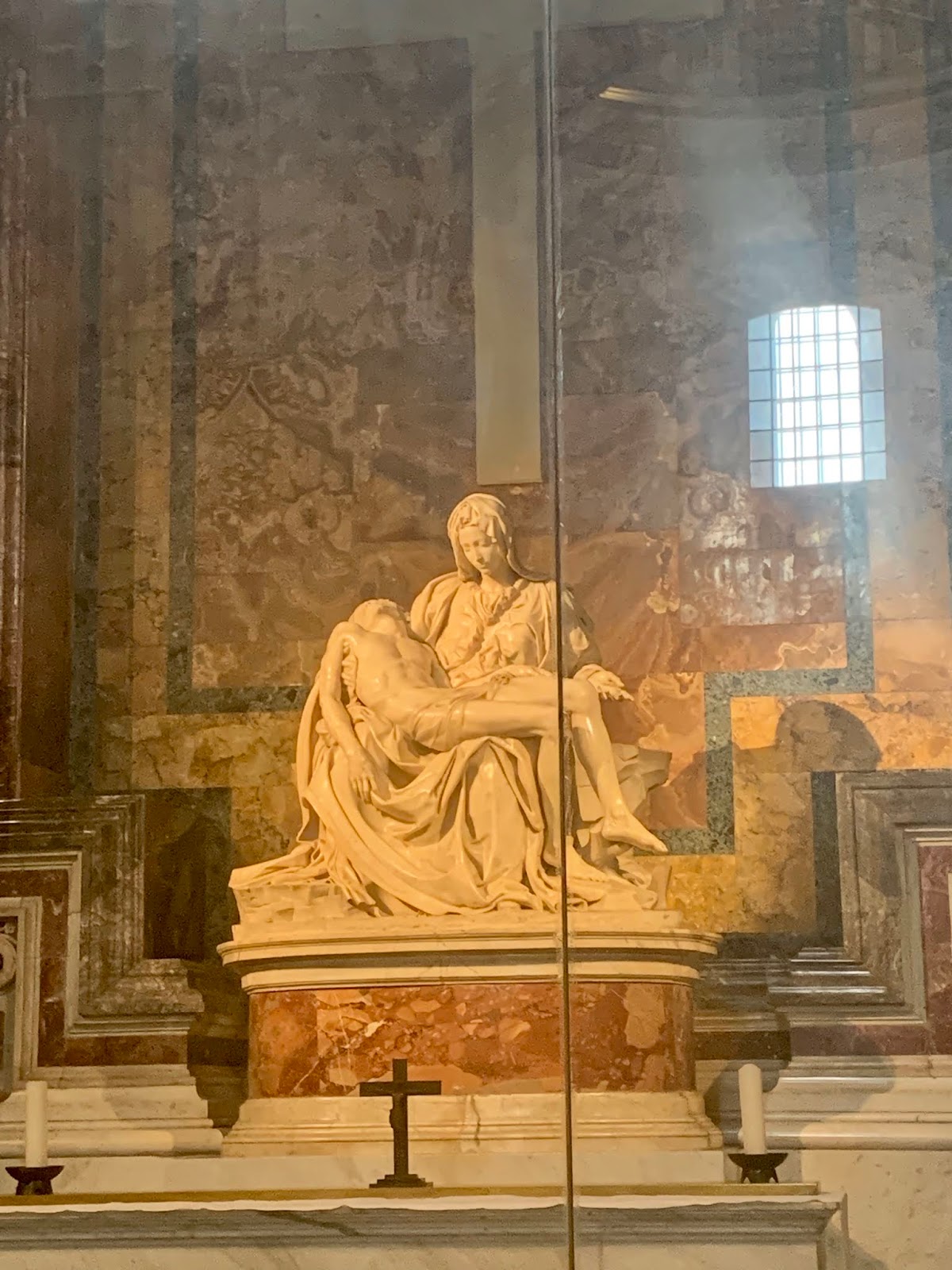The city of Florence holds significance in the history of our world. It is the city where the Renaissance began, a time period that brought Europe out of the dark. It is the city where the Medici family changed the fortunes of the middle class, the city where Michelangelo gained inspiration from growing up, the city that most United States federal buildings are designed after. Florence is a city I had been dying to visit ever since I was a sophomore in high school taking AP World History. I was afraid that my expectations were too high and that I would be disappointed after years of dreaming about it. But I was wrong. Florence is everything I imagined it would be and more.
We began our day in Florence at Piazza di Santa Croce in the shadow of the Basilica of Santa Croce. Although we did not have time to explore inside, Basilica of Santa Croce is home to both Michelangelo and Galileo's tombs. From there we explored the alleys and streets surrounding the church. It was only fitting that Michelangelo grew up in the same neighborhood to which he is buried. His childhood home is marked with a plaque that may otherwise be missed unless you know it is there.
After exploring the streets surrounding Basilica of Santa Croce we then visited arguably one of the most famous churches in the entire world, the Cathedral of Santa Maria del Fiore. The cathedral towers over Florence. It is easy to see how it is the third largest church in the world (first being St. Peter's in Rome, second St. Paul's in London). Once again we did not have time to go inside (July in Italy is CRAZY busy), but I know that one day I will return. This church is incredibly significant in architecture and design. The dome is one of a kind, largely being built in the 15th century.
Florence is a city that is very easy to explore. A short walk from the magnificent Santa Croce is Piazza della Signoria, otherwise known as the heart of Florence. This 14th century square is home to a copy of Michelangelo's David (the original is now housed in the Galleria del Accademia and the copy is where the statue originally stood), the Fountain of Neptune, and many more famous Renaissance works.
As I mentioned before, July in Italy is one of the busiest times. The majority of our visit to Florence, although enjoyable, required us to force our way through crowds and crowds. When lunch came we dipped down a deserted street and stumbled across Vecchio Vicolo. There was no one inside, which can be taken as either a good sign or a bad sign. We decided to take it as a good sign, a sign that the restaurant was not very touristy. To this day, Vecchio Vicolo is my favorite restaurant in all of Italy. I cannot recommend this place enough.
After the perfect lunch we walked across Pinte Vecchio, the famous medieval bridge in Florence. The bridge itself is a beautiful piece of architecture, but be careful of pit pockets. Our destination was across the river at Pitti Palace, aka one of the many homes to the famous Medici family.
Pitti Palace was home to the Medici Family in the 16th century. It's grandness perfectly shows how powerful the Medici Family had become. Its as such an important building in Florence that by the 18th century Napoleon used it as a base. The palace is now divided into four museums and a garden. We spent the majority of our visit exploring the vast and beautiful gardens which has a perfect view of the city of Florence.
Florence is an incredible city. Just by walking the streets you can gain an appreciation for the importance of the city on the history of our world. Although our trip was brief, Florence easily became one of my favorite cities in all of Europe.
xoxo























































